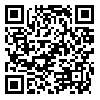BibTeX | RIS | EndNote | Medlars | ProCite | Reference Manager | RefWorks
Send citation to:
URL: http://ijaup.iust.ac.ir/article-1-221-fa.html
Following development and qualitative and quantitative changes in communities, that have made substantial changes in historic environments, the authenticity concept has attracted attention in order to strike a balance between conservation and development approaches. The concept of authenticity as the transmitter of values and significance of cultural heritage, is regarded as a key criterion in the process of conservation and thus, the need for clarification of its factors has been emphasized in the international documents. This paper aims to refine the prioritization of authenticity factors in the plans and measures of the revitalization project of Atique Square in Isfahan, Iran. To achieve this, firstly the conventions and the international documents related to authenticity are reviewed using qualitative research methods and content analysis strategy consequently the effective factors in measuring authenticity have been selected in three main categories : ‘historical-evidential values’, ‘artistic values and creativity’, and ‘socio-cultural values’. After that, prioritizing these factors in the Atique Square revitalization, is analyzed by quantitative research method and correlation strategy. The findings indicate that the ‘historic- evidential values’, ‘socio-cultural values’ of the context and ‘artistic values and creativity’, in descending order, have the highest to the lowest contribution in explaining the concept of authenticity in the measures taken for the project of the Atique Square revitalization.
| بازنشر اطلاعات | |
 | این مقاله تحت شرایط Creative Commons Attribution-NonCommercial 4.0 International License قابل بازنشر است. |


